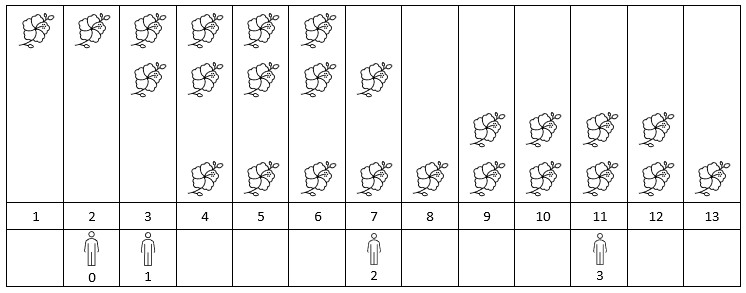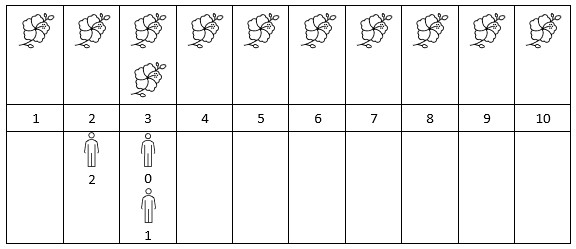public class Solution
extends Object
2251 - Number of Flowers in Full Bloom\.
Hard
You are given a **0-indexed** 2D integer array `flowers`, where flowers[i] = [starti, endi] means the ith flower will be in **full bloom** from starti to endi ( **inclusive** ). You are also given a **0-indexed** integer array `persons` of size `n`, where `persons[i]` is the time that the ith person will arrive to see the flowers.
Return _an integer array_ `answer` _of size_ `n`_, where_ `answer[i]` _is the **number** of flowers that are in full bloom when the_ ith _person arrives._
**Example 1:**

**Input:** flowers = \[\[1,6],[3,7],[9,12],[4,13]], persons = [2,3,7,11]
**Output:** [1,2,2,2]
**Explanation:** The figure above shows the times when the flowers are in full bloom and when the people arrive. For each person, we return the number of flowers in full bloom during their arrival.
**Example 2:**

**Input:** flowers = \[\[1,10],[3,3]], persons = [3,3,2]
**Output:** [2,2,1]
**Explanation:** The figure above shows the times when the flowers are in full bloom and when the people arrive. For each person, we return the number of flowers in full bloom during their arrival.
**Constraints:**
* 1 <= flowers.length <= 5 * 104
* `flowers[i].length == 2`
* 1 <= starti <= endi <= 109
* 1 <= persons.length <= 5 * 104
* 1 <= persons[i] <= 109